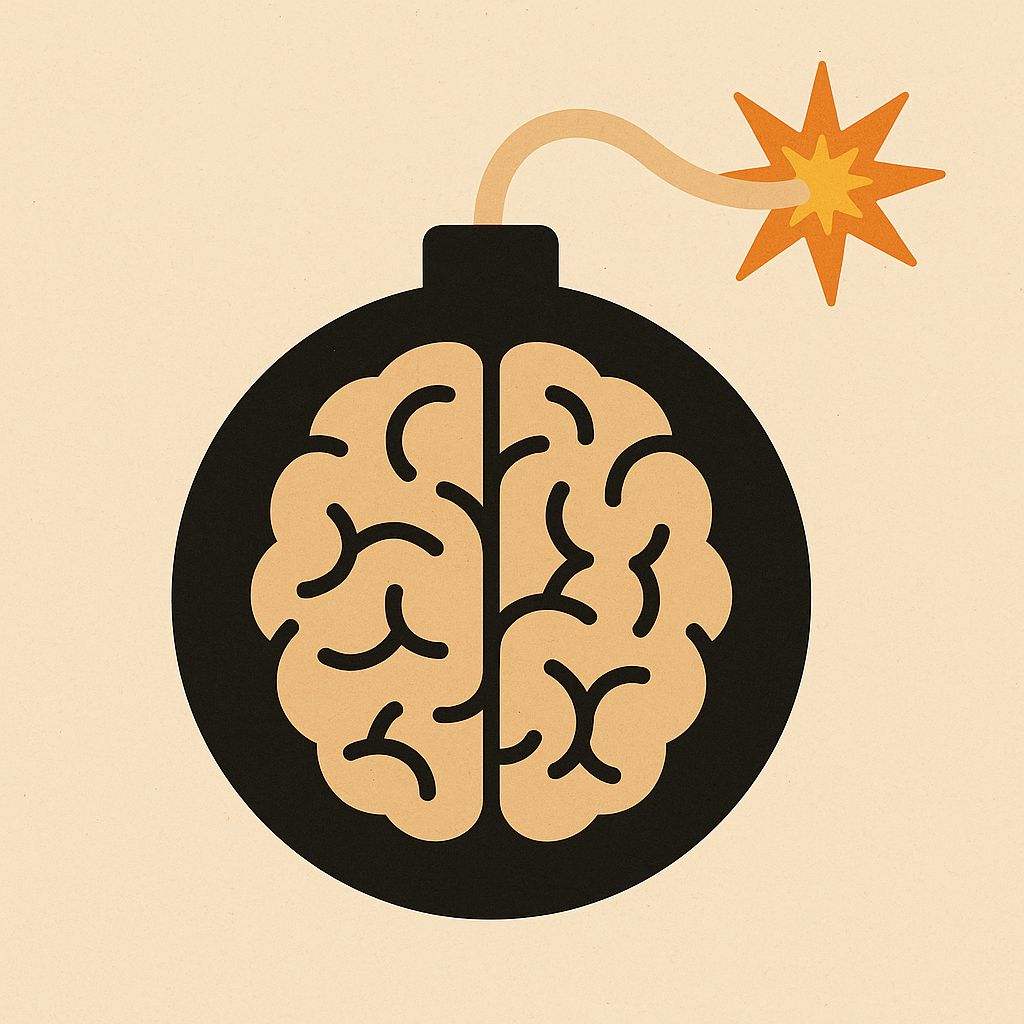- The Drop In
- Posts
- The Drop In: Burnout Proof
The Drop In: Burnout Proof
Edition 009

The Drop In
Edition 009
Making Yourself Burnout Proof
Welcome back to The Drop In — your weekly Flow-State OS for peak performance.
Introduction
When most people think of burnout, they imagine long hours at the office, endless meetings, or juggling too many responsibilities at home. The usual diagnosis: you’re simply “working too hard.”
But the reality is more complex. Burnout isn’t only about the hours you put in. It’s about the alignment (or misalignment) between what you give, what you value, and what you receive in return.
This week, let’s challenge the myth that burnout can be solved with just a vacation. True resilience requires identifying the real triggers of burnout and then building the routines, recovery, and mindset that make you burnout proof.
The Four Triggers of Burnout (Beyond Overwork)
1. Value Conflict
When the work you’re doing doesn’t align with what you believe in, it drains you at a deeper level. You can work hard at something you care about and feel energized. But when your daily actions contradict your values, even “light” workloads feel exhausting.
Ask yourself: Am I spending my energy on something that actually matters to me?
2. Insufficient Reward
Humans are wired for reciprocity. When you give effort but don’t feel recognized, whether through pay, acknowledgment, or a sense of progress, you deplete your reserves. Burnout is often less about how much you’re working and more about how invisible that work feels.
Ask yourself: Do I feel seen, valued, and rewarded for the energy I give?
3. Unfairness
Few things erode motivation faster than the sense that the game is rigged. Unequal opportunities, favoritism, or broken promises create resentment. Resentment is a burnout accelerant.
Ask yourself: Do I feel the system I’m operating in is fair, or am I fighting uphill every day?
4. Breakdown of Community
Humans are social creatures. When we lose connection, support, and belonging, even ordinary challenges feel heavier. Isolation at work, or even at home, turns stress into burnout.
Ask yourself: Am I surrounded by people who support me, or am I carrying the weight alone?
The Myth of Time Out
Vacations, long weekends, or sabbaticals can help, but they’re not the cure. Time off without addressing the underlying triggers is like pouring water on a grease fire. It looks good in the moment, but the flames return as soon as you’re back.
The better question is: What’s depleting me? A “burnout inventory” across the four triggers can reveal where the cracks are forming. Often, it’s not just one trigger but two or three layered together.
Expanding Your Window of Tolerance
Burnout proofing yourself isn’t about working less. It’s about building capacity. Think of yourself as an executive athlete. Just like elite performers in sports, executives and high-achievers need to prioritize recovery as much as performance.
Sleep: Non-negotiable. Deep rest repairs both body and mind.
Recovery Routines: Sauna, cold plunges, meditation, or simply walks without your phone. These are resets, not luxuries.
Rhythm & Structure: Build routines that create predictability and stability, even when the outside world is chaotic.
The goal: widen your window of tolerance so that stress hits you like a wave: something you can ride, not something that pulls you under.
Making Yourself Burnout Proof
To become burnout proof, you must treat your life like an athletic pursuit: performance cycles balanced by recovery cycles. You identify your triggers, you align your work with your values, and you build daily practices that allow you to reset before exhaustion takes hold.
High-performers who master this don’t just survive high-pressure environments, they thrive in them.
Praxis
This week:
Burnout Inventory: Sit down with the four triggers and check in honestly. Which ones resonate most right now? Are multiple triggers active at once?
Recovery Reset: Pick one practice—early bedtime, unplugged walk, or morning journaling—and commit for 7 days. Notice how your baseline changes.
Community Check: Who can you lean on? Strengthening your support system is just as important as strengthening your body.
Closing
Burnout is real. But it’s not inevitable. By shifting from the mindset of “work until collapse, then take time off” to “train like an executive athlete,” you make yourself resilient, adaptive, and yes—burnout proof.
– Michael
Founder, The Drop In
& Author of ‘Human Traits — a novel exploring humanity’s relationship with AI’